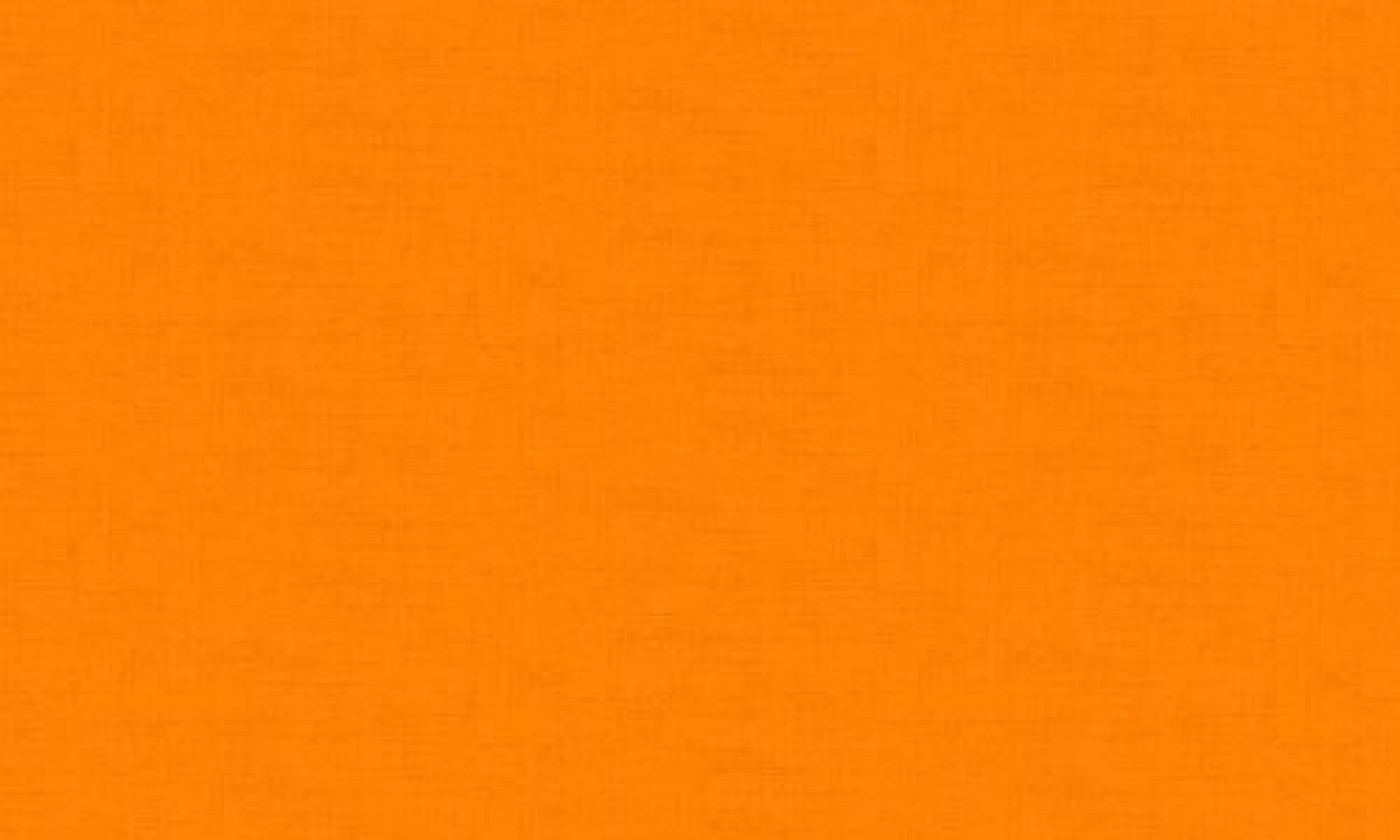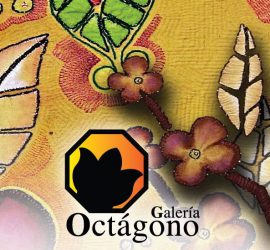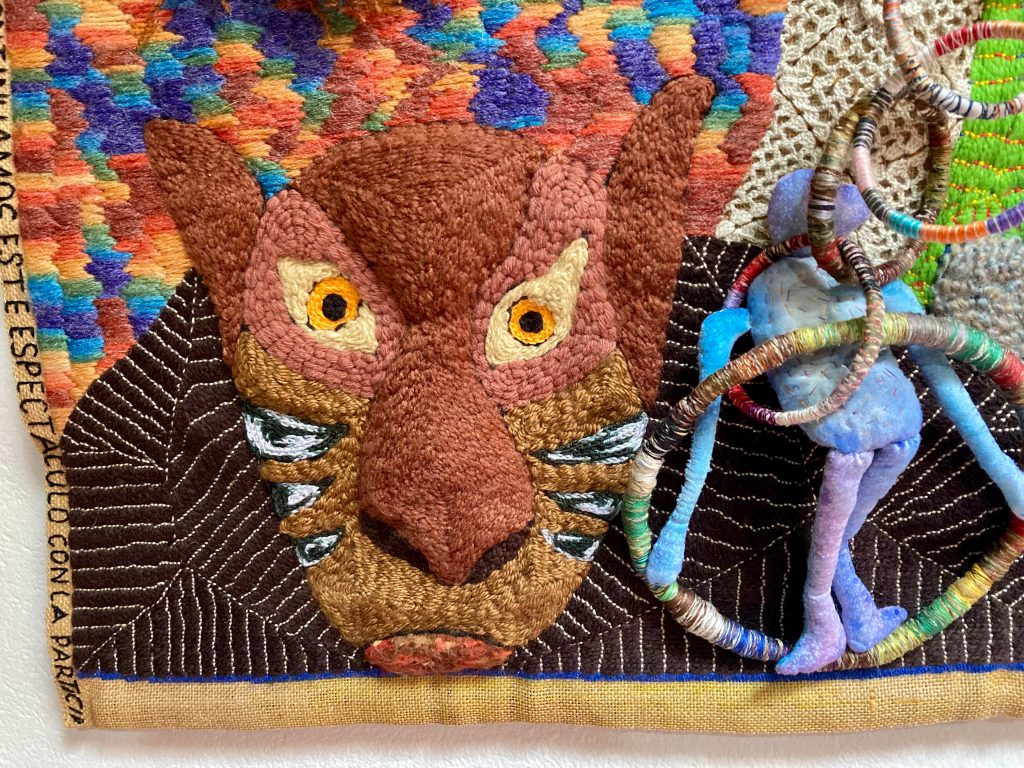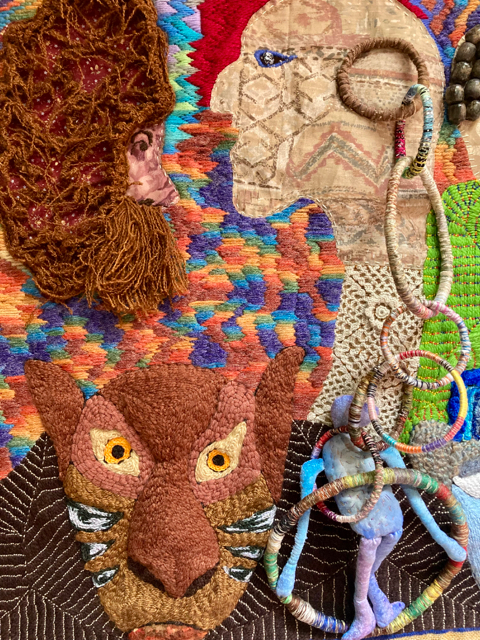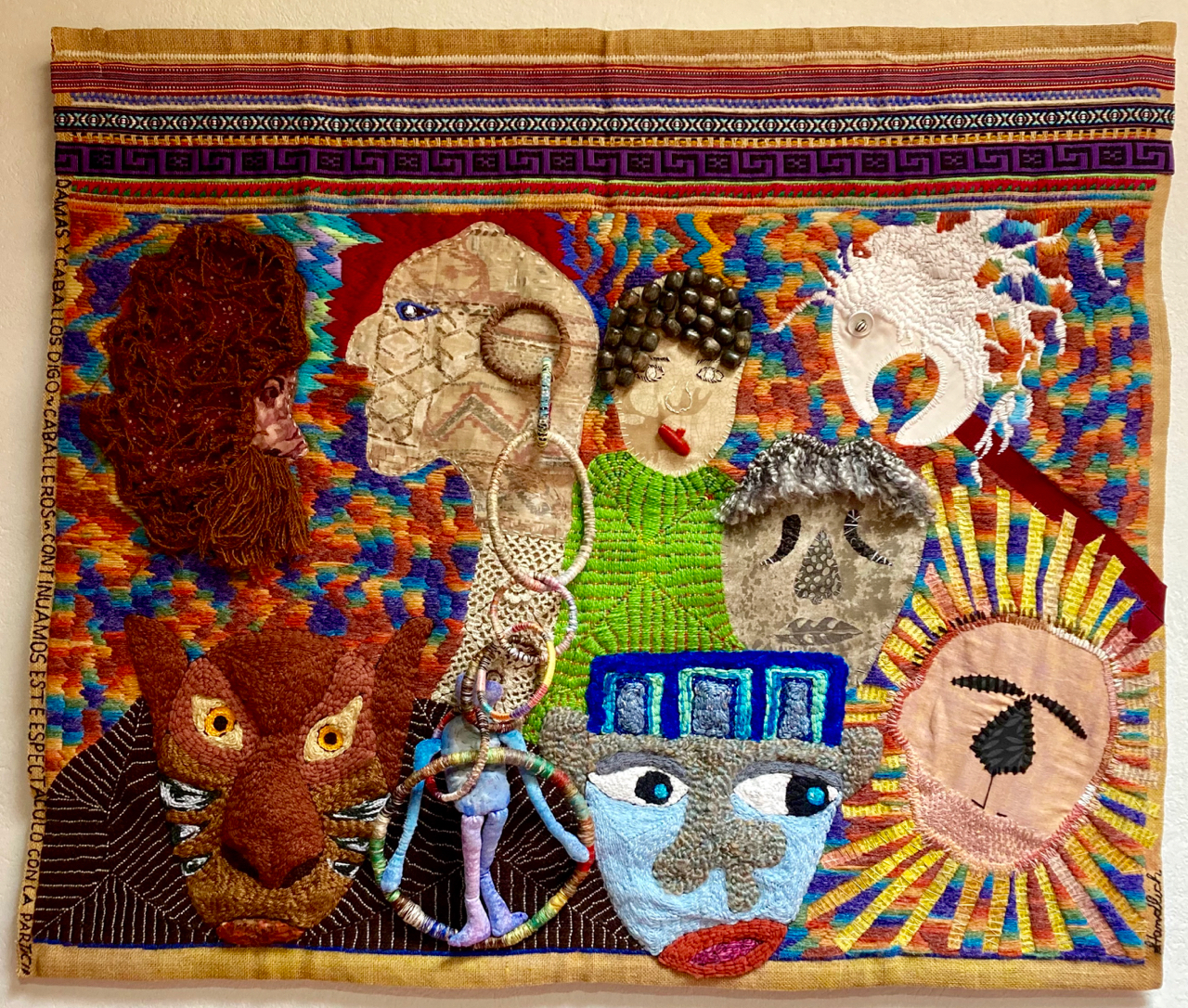ESPECTÁCULO DE GANGOCHE
Alto: 84 cm
Ancho: 100 cm
Fondo: 13 cm máximo (fluctuante)
Técnicas: bordado, crochet, envoltura, appliqué, escultura blanda y puntada andina sobre gangoche.
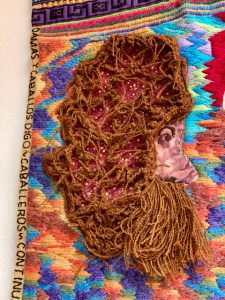 A los 10 años, fui al servicio sanitario cuando alimentaban felinos gruñones con carne ensangrentada y maloliente, mientras extraños personajes observaban con pintura derretida en la cara, pelucas y pinchos en las manos. Por mi seguridad, me ordenaron quedarme en el sanitario improvisado, donde sacos de gangoche vacíos, aserrín en el piso y papel periódico pegado sobre la lona, eran cautivantes y percibí una imagen rápida de graffiti en las paredes cuando entré en el cubículo. No podía distinguir las palabras o los sonidos en el espacio adyacente y, sin embargo, todo poseía color fantástico a la luz del débil bombillo amarillento, dejando una marca en mi mente con un aroma inmarcesible de colores, aromas y formas.
A los 10 años, fui al servicio sanitario cuando alimentaban felinos gruñones con carne ensangrentada y maloliente, mientras extraños personajes observaban con pintura derretida en la cara, pelucas y pinchos en las manos. Por mi seguridad, me ordenaron quedarme en el sanitario improvisado, donde sacos de gangoche vacíos, aserrín en el piso y papel periódico pegado sobre la lona, eran cautivantes y percibí una imagen rápida de graffiti en las paredes cuando entré en el cubículo. No podía distinguir las palabras o los sonidos en el espacio adyacente y, sin embargo, todo poseía color fantástico a la luz del débil bombillo amarillento, dejando una marca en mi mente con un aroma inmarcesible de colores, aromas y formas.
Los aromas mentales clasifican el hedor a carne como un mal olor pero, en ese momento, mi miedo, fascinación y cierta sensación de estar en un lugar indebido…se unieron, mientras que los olores a carne podrida, sudor viejo y letrina improvisada reforzaron la experiencia sensorial y se aseguraron de que todo permaneciera neocórtex en el cerebro de una niña que comenzaba a explorar el mundo.
Las habilidades se adquieren a través del aprendizaje, pero un momento fascinante en la vida puede enseñar de manera impredecible. No puedo explicar cómo la luz del bombillo, colgando de una lona en movimiento y amenazando con quemar o distorsionar todo a su alrededor —ni porqué el resto del entorno— se absorbió y mezcló en mi cerebro. Sentía anhelo de experimentarlo de nuevo, no solo como era, sino como he querido imitarlo. Ese día inicié una relación con el gangoche, el cual es un material falto de transparencia aunque aporte recursos para estimular procesos creativos muy interesantes. Gangoche, olor, color y trucos de luz, son la fórmula del recuerdo.
Mi propio escenario llegó más tarde en forma de presentaciones de ballet, música y arte textil muy “controladas” y “obedientes” que también requerían apariencia teatral y comportamiento específico pero, en un sentido más amplio, no hay nada que se pueda comparar con la adrenalina proporcionada por el color de ese día. “¡Hice contacto visual con pumas hambrientos!”
Sin saberlo, una imagen sensorial se convirtió en el centro del escenario de mi estilo creativo a lo largo de mi vida. Pensando de manera lógica en este planeta cambiante en lo que refiere al clima, el gangoche de sisal o cáñamo bien puede ser una fibra del futuro: fuerte, duradera y práctica, pero también puede parecer decorativa y divertida. Proporciona una semejanza a una cuadrícula para costuras tradicionales repetitivas (¡chica bien portada!), mientras que me brinda la oportunidad perfecta para ser imperfecta.
En cuanto al color, uno tiende a dejar de lado las paletas de pintura o textil si nuestra superficie ya es inusualmente cafezusca, pero el aspecto terroso resultante de la falta de transparencia, es agradable a la vista y va bien con mis sentimientos descoloniales en cuanto a estilo artístico y mis preciados recuerdos de ese extraño día de circo. 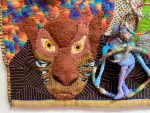
Nota: En el año 2007, el libro Agua para elefantes de Sara Gruen —y posteriormente la película del mismo nombre en el 2011— expuso la crueldad hacia personas y animales en muchos circos del mundo. Hoy en día, la mayoría de los circos dejaron de entrenar y usar animales, y se abstienen de mostrar a personas como si fueran “monstruos”.
—Silvia Piza-Tandlich
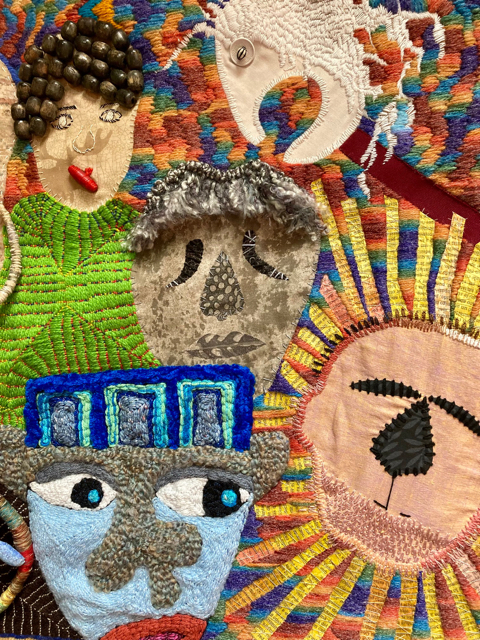 BURLAP PERFORMANCE
BURLAP PERFORMANCE
Height: 84 cm
Width: 100 cm
Depth: 13 cm max (it fluctuates)
Techniques: Embroidery, crochet, wrapping, appliqué, soft sculpture, and couching over burlap.
At age 10, I went to the WC just as growling felines were being offered bloody, smelly meat, while weird characters observed with melted makeup on their face, wigs, and pokes at hand. For my safety they ordered me to remain in the improvised cubicle, where empty burlap sacks, sawdust on the floor, and newsprint glued onto the tarp were captivating, and I perceived a flying image of graffiti as I entered the space. I couldn’t make out sounds or words coming from the adjacent space and, however, everything had a fantastic color under the faint light of a yellowish bulb—marking my mind with an unfading aroma of colors, smells, and forms.
Mental aromas classify the stench of meat as a bad odor, but right then my fear, fascination, and a certain delight in being in an improper place…united, while the rotten meat smell, old sweat, and improvised latrine reinforced my sensory experience, making sure it all remained neocortex in the brain of a girl starting to explore the world.
Skills are acquired through learning, but a fascinating moment in life can teach in unpredictable ways. I can’t explain how the light from the bulb, hanging from a moving tarp and threatening to burn or distort everything around it — or why the rest of the environment — was absorbed and mixed in my brain. I longed to experience it again, not just as it was, but how I wanted to imitate it. That day I started a relationship with burlap, which is a material lacking transparency although it provides resources to stimulate very interesting creative processes. Burlap, odor, color and tricks of light, are the formula for memory.
My own stage came later in the form of very “controlled” and “obedient” ballet, music and textile performances that also required theatrical appearance and specific behavior but, in a broader sense, there is nothing that compares to the adrenaline provided by the color of that day. “I made eye contact with hungry pumas!”
Unknowingly, a sensory image became center stage in my creative style throughout my life. Thinking logically in this changing planet when it comes to climate, sisal or hemp weave may well be a fiber of the future: strong, durable and practical, but it can also look decorative and fun. It resembles a grid for repetitive traditional stitching (well behaved girl!,) while giving me the perfect opportunity to be as imperfect as its grid.
When it comes to color, one tends to leave out paint or textile palettes if our surface is already unusually brownish, but the earthy look resulting from the lack of transparency is pleasing to the eye and goes well with my decolonial feelings in terms of color, art style, and my cherished memories of that strange circus day.
Note: In 2007 Sara Gruen’s book, Water for Elephants —and later the film of the same name in 2011— exposed the kind of cruelty to people and animals in many circuses around the world. Today, most circuses stopped training and using animals, refraining from portraying people as “freaks.”
—Silvia Piza-Tandlich
